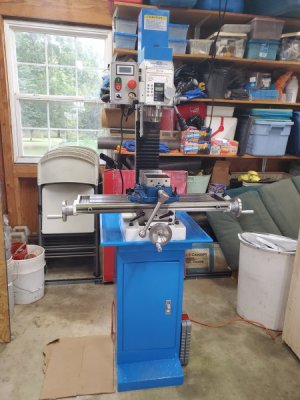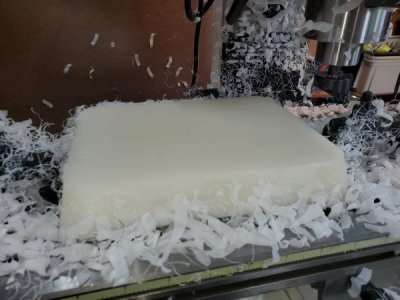- Joined
- Jan 20, 2016
- Messages
- 602
On this, are there compatibility concerns or drivers?
If you go with Mach4, you just need to make sure the motion controller your select will work with Mach4. Note that a motion controller and breakout board are not really the same thing. A breakout board just gives you easier access to the pins and usually provides opto-isolation. The motion controller will have an onboard processor that handles timing, coordinates motion, etc. Stepper drivers all (as far as I know, there could be some obscure exceptions) take step and direction signals, which any motion controller will be able to output.
Does this software have all of the jog and manual movement controls?
Yes, Mach4 will allow you to control the machine manually.
These seem to work pretty closely together as if the controller (maybe a Warp 9) is the hardware interface between the software and the motors and sensors.
With a motion controller, it is slightly more than that. Mach4 will send instructions to the motion controller, the motion controller will interpret those instructions and generate the output to the machine. This is where LinuxCNC and Mach4 are going to differ most. LinuxCNC outputs step and direction signals directly (It is the motion controller) while Mach4 would be going through a motion controller.
Controller provides the low power commands to the drive and the drive provides the power to the motors. Am I missing a breakout board here or is that commonly integral to the controller, or one in the same?
That depends on which motion controller you get. Some of them will let you easily wire directly to the drivers, others you will need to either make connectors or get a breakout board. For example, the smoothstepper has onboard parallel ports, so your options are to get a parallel port breakout board which lets you use screw terminals to wire in, or you can try to wire a parallel port connector directly to the drivers.
Where would a pendant (MPG) plug into this system and what is your opinion on the necessity of this?
That would probably plug it into your Mach4 computer via USB, but I think there are some motion controllers that you can plug into as well. Not at all required. I have always just used a keyboard, but I am sure an MPG would be helpful.
On the computer side, ethernet sounds like the way to go nowadays but my laptop has no port. I could use a USB to RJ45 converter but then have no electrical isolation (surely they make a converter with this isolation as part of it). This or go wireless?
I am not an expert on Mach4, but I think using a laptop for it isn't recommended. Maybe those problems have gone away, but I recall reading that a desktop is the way you want to go. Regarding opto-isolation, the isolation comes from the motion controller, so using a converter to connect to the motion controller wouldn't bypass the opto-isolation. I wouldn't dream of going wireless for motion control. That is just asking for problems.
Maybe it's just me but I haven't found a good tutorial which puts all these pieces of the puzzle together in one place. Perhaps when I succeed, I will do that!
I think the issue with that is the relative abundance of options vs the relatively few people that convert their own machines. General tutorials (which I have seen plenty) would be more helpful as they guide you to the point where you can continue on your own. Once you have your components selected (in my opinion, the hardest part), there are guides for everything you need to do. For example, the machine hardware kit you get will have a guide to installing it on the machine. Mach4 and ESS (if you go with those 2) will have a guide for installation/configuration and the drivers you select for the motors will have instructions on wiring. A tutorial putting it all together would have a lot of "If you used these exact parts, do this. Otherwise, reference your components manual."



